
Biological Soil Crust in the Christopher B. Smith Preserve
Biological Soil Crust Characteristics: Much of the sand in the scrub is covered by a thin crustal community of highly specialized micro and macro organisms. In some of the scrub, the crust is dark greenish-black. This is probably a complex mosaic of bacteria, microfungi, cyanobacteria, green algae, liverworts, and lichens. In other areas, the crust is Cladonia sp. (foliose lichens) and Cladina sp. (branched lichens). All of the crusts are uneven, rough carpets one to ten mm tall. Filaments weave through the upper few millimeters of the sand and glue loose particles together. During drought, the organisms in these crusts dry out and photosynthesis and respiration stop. Upon rehydrating, photosynthesis and respiration resume.
Interactions in the Smith Preserve: Crusts help stabilize the sand grains, preventing erosion by wind and water. Also, the crusts retain moisture, fix atmospheric nitrogen, and contribute organic matter to the soil.
Greenish- Black Organic Crust
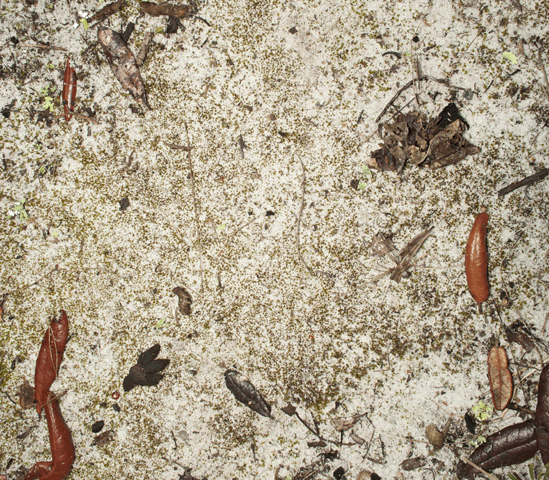
Cyanobacterial crusts are usually black. When moist, the cyanobacteria may be visible as black filaments. When moist, green algal crusts appear as a greenish color on the soil surface. Liverworts are tiny black ribbons that become more obvious when wet. One kind of gelatinous lichen is black and can be three dimensional. When moistened, this lichen has a jelly-like texture and swells to several times its dehydrated size.
At left, the oak leaves show scale for the size of a greenish-black crust. This crust probably contains many of the organisms described in the paragraph above. This photograph was taken near the oak trees visible from the south side of the elevated walkway.
Below: A large crustal community was removed for hydrating and photographing. The first photograph shows the edge of the community. The white organism is either a fungus or a lichen. The second photograph shows a close up of this organism.
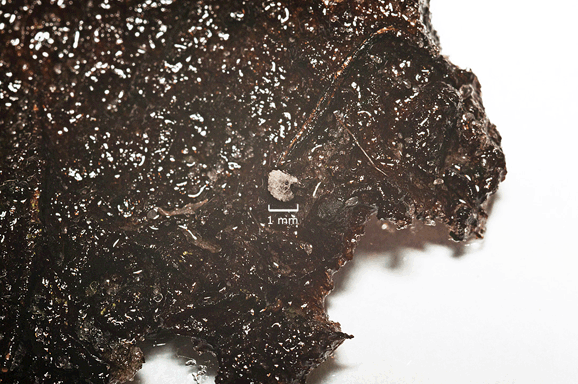 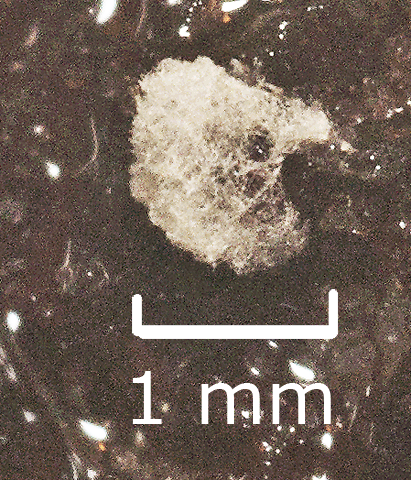
Below: These photographs show another portion of the same colony. Note the filaments in top right edge in the first photograph. Also note the gray-green hieroglyphic-shaped organisms. They have been enlarged in the second photograph and are probably liverworts.
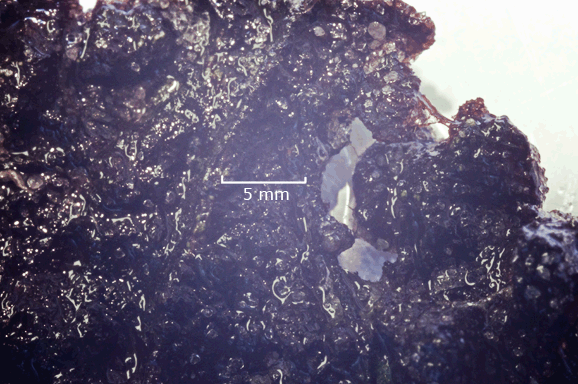 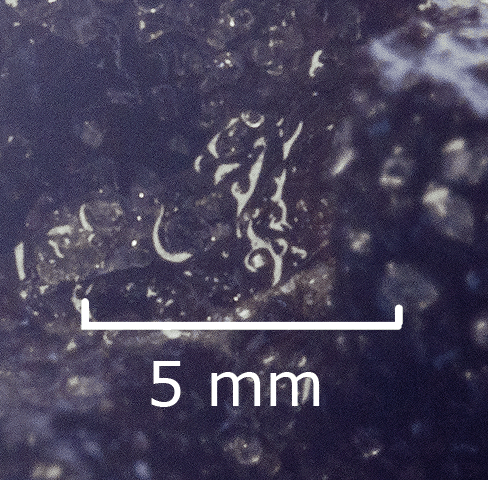
Return to Top
|
Lichen Crusts
Cladonia sp. (Foliose Lichens)
As shown below, this lichen crust grows adjacent to the southern edge of Smith Preserve Way, the elevated roadway entering the Conservancy of Southwest Florida Nature Center. The orientation of this photograph is looking North from the lichens to the roadway.
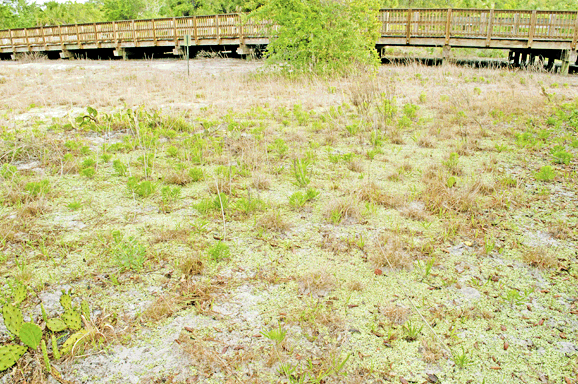 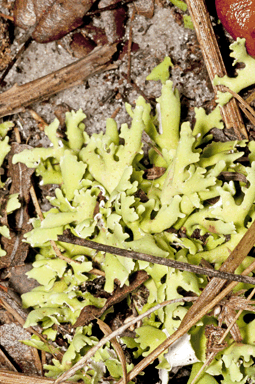
Return to Top
Cladina sp. (Branched Lichens)
These photographs were taken in the middle of the Smith Preserve. These lichens are growing in a large community at the base of Balduina angustifolia (yellow buttons).
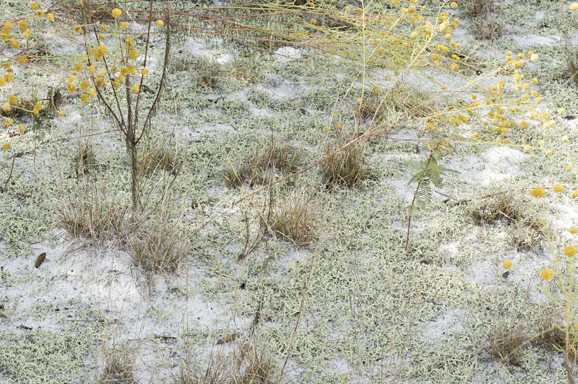 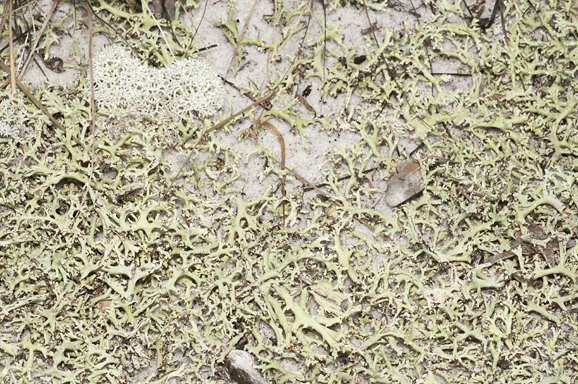
Return to Top
Cladina sp. (Reindeer Moss Lichen)
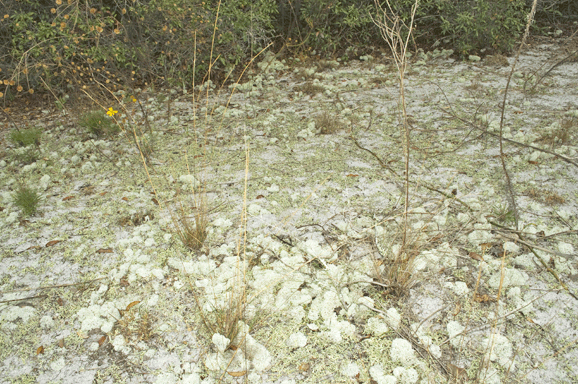
These lichens are growing at the southern edge of an oak scrub area near the middle of the Smith Preserve. Large mats of this genus take decades to develop. Since fire kills this lichen, the extensive carpet shown in the first photograph is an indication that the area has not been exposed to fire for a very long time.
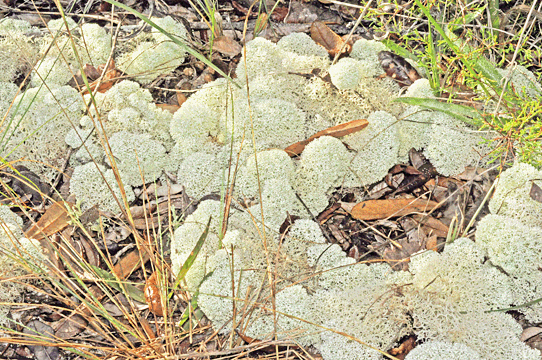 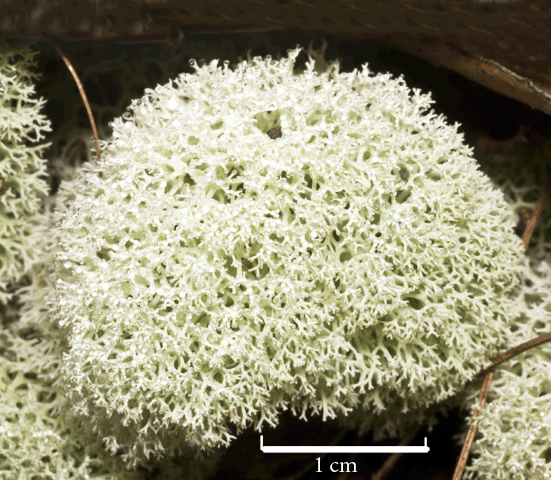
Return to Top
|
© Photographs and text by Susan Leach Snyder (Conservancy of Southwest Florida Volunteer), unless otherwise credited above.
Return to Christopher B. Smith Preserve











